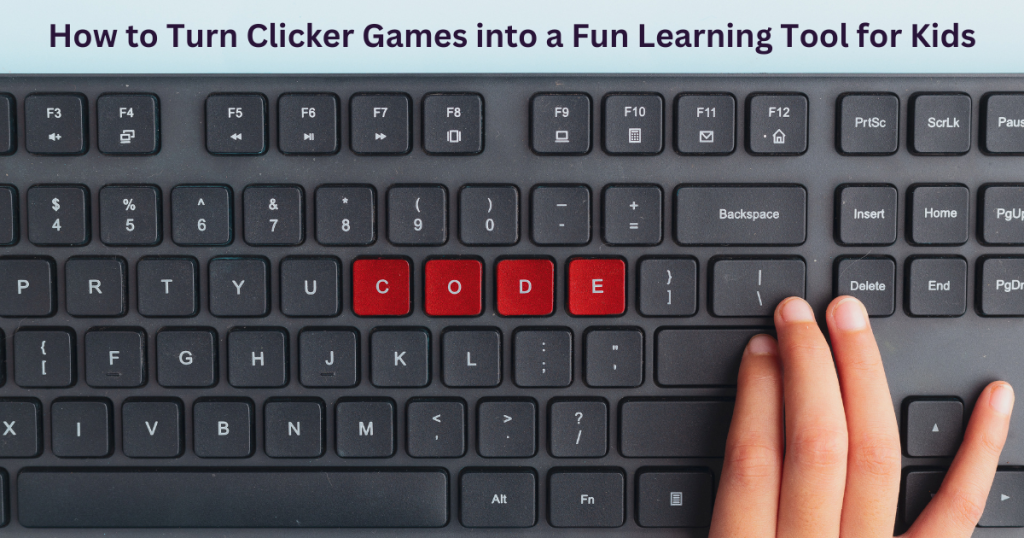
Clicker games, often dismissed as mindless tapping activities, have surprising potential as educational tools for kids. These games, known for their simple mechanics and repetitive actions, can be transformed into powerful learning experiences when used correctly. By integrating educational content, setting learning goals, and using the games to reinforce concepts, parents and educators can turn clicker games into fun and effective learning tools.
Understanding the Appeal of Clicker Games
Clicker games are incredibly engaging due to their simple mechanics and instant gratification. Kids love them because they offer a sense of progression without requiring complex skills. The dopamine rush from achievements and rewards keeps them engaged for extended periods. By leveraging this natural attraction, educators and parents can introduce learning elements without making the experience feel forced. Instead of passively tapping, children can engage with educational content in an enjoyable way.
Incorporating Math Skills into Clicker Games
One of the easiest ways to use clicker games for learning is by incorporating math exercises. Many clicker games involve counting, multiplying, and managing in-game resources, which can subtly reinforce arithmetic skills. Parents can encourage kids to track their progress using multiplication tables or estimate how long it will take to reach a goal. Some games even allow players to optimize strategies based on mathematical concepts, making learning a natural part of the gameplay.
Enhancing Reading and Vocabulary Development
Clicker games can also be used to improve a child’s reading skills. Games that involve text-based instructions, dialogues, or challenges encourage kids to read and comprehend information quickly. Parents can introduce word-based clicker games that require spelling words correctly or recognizing definitions to advance. Additionally, incorporating educational storytelling into clicker games can enhance vocabulary and comprehension skills in a playful setting.
Teaching Strategic Thinking and Problem-Solving
While clicker games may seem simplistic, many of them involve strategic decision-making. Kids must decide when to upgrade, how to allocate resources, and which paths to take to maximize their progress. These choices help develop problem-solving skills and critical thinking. By discussing strategies and helping children analyze their decisions, parents can turn gameplay into an exercise in logical reasoning.
Introducing Science Concepts Through Interactive Play
Science-based clicker games can introduce kids to fundamental concepts in physics, chemistry, and biology. Games that involve resource management can teach children about the scientific method, environmental conservation, and even space exploration. Parents can enhance this learning by discussing real-world applications of the concepts in the game, making science more relatable and engaging.
Encouraging Creativity and Storytelling
Some clicker games include elements of customization, creativity, and storytelling. Games that allow kids to build worlds, design characters, or make choices in a storyline can boost their creativity. Encouraging kids to create their own narratives based on the game can help with writing skills and imaginative thinking. Parents can even ask kids to write a short summary or alternative endings to the game’s storyline, turning gameplay into a creative writing exercise.
Developing Time Management and Patience
Many clicker games involve waiting periods or resource accumulation over time, teaching kids patience and time management. These mechanics can help children understand the importance of delayed gratification and planning ahead. Parents can use these moments to teach kids about setting goals, prioritizing tasks, and managing their time efficiently—valuable skills that go beyond gaming.
Using Clicker Games for Memory and Concentration Improvement
Repetitive gameplay in clicker games can help improve memory and concentration. Certain games require players to remember patterns, sequences, or strategies to progress. Encouraging kids to recall information from previous gameplay sessions can enhance their cognitive abilities. Parents can also introduce memory-based challenges, such as recalling specific numbers, formulas, or story elements from the game.
Ensuring a Balanced Approach to Screen Time
While clicker games can be a great educational tool, it’s essential to balance gameplay with other activities. Parents should set time limits and ensure that gaming is just one part of a child’s learning routine. Encouraging outdoor play, hands-on learning, and social interactions can complement the benefits of clicker games. By maintaining a healthy balance, kids can enjoy the fun of gaming while still engaging in diverse educational experiences.
Conclusion
Clicker games don’t have to be mindless entertainment. With a little creativity, they can become valuable learning tools that teach kids math, reading, problem-solving, and even patience. By selecting educational games, guiding children’s gameplay experiences, and incorporating learning goals, parents and educators can make the most out of these simple yet engaging games. Instead of discouraging gaming, embracing it as an interactive learning tool can open new doors for children’s education.
